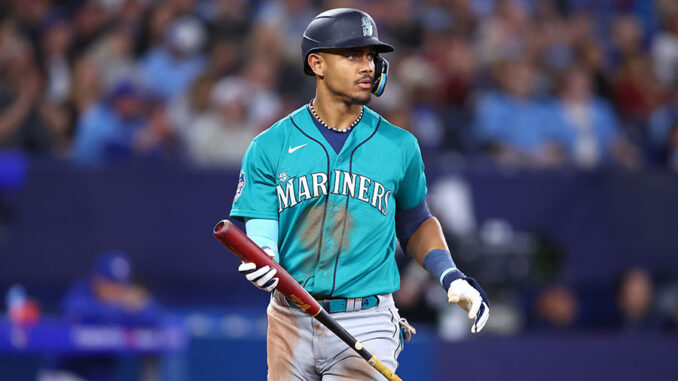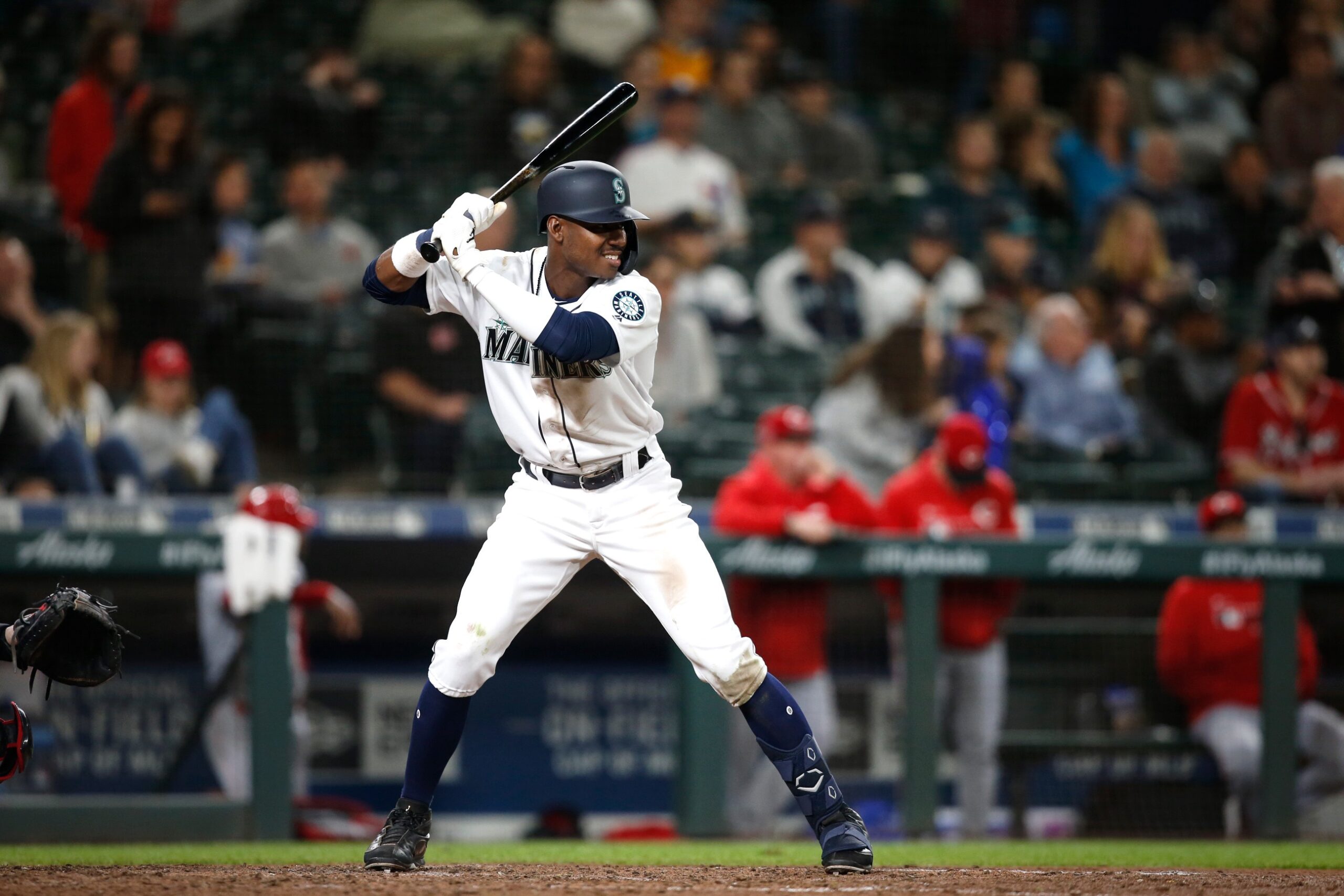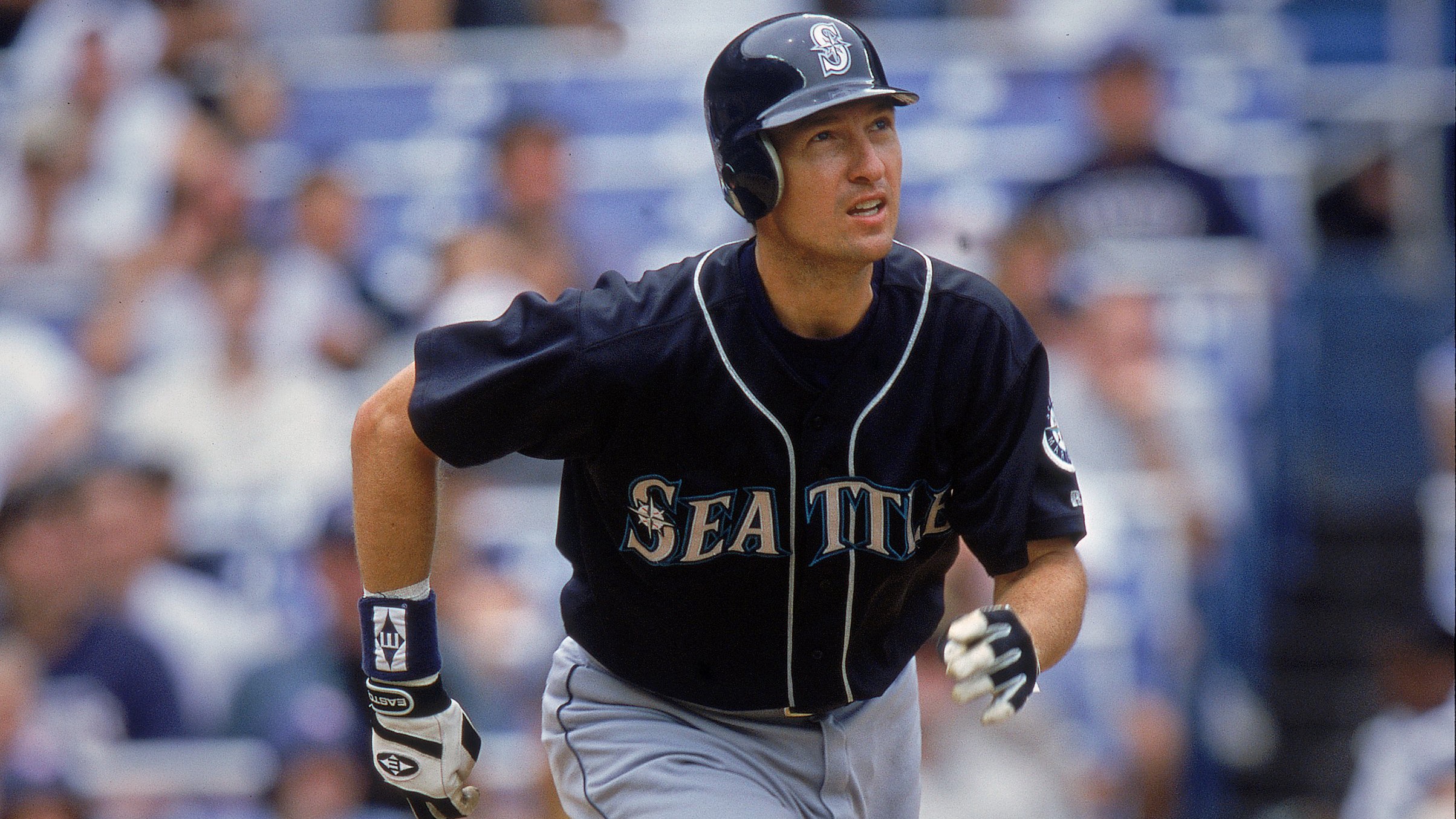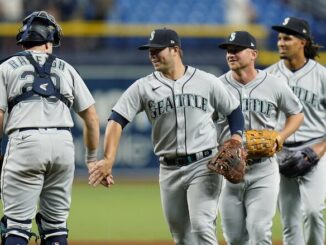
The Seattle Mariners may be Major League Baseball’s most baffling team.
After taking two of three from archnemesis Houston and sweeping the woeful Oakland Athletics, the Mariners managed to pull to .500 for the first time this season, only to fall flat on their face in a three-game series against the Texas Rangers.
Through the first quarter of the season, they’ve had some things go right (the entire pitching staff) and some things go wrong (nearly every hitter outside Jarred Kelenic). Let’s break down how the team has wound up at just under .500 and three games back from a playoff spot at this point in the season.
The Good
As predicted, the Mariners have one of the top pitching staffs in baseball. The starting rotation has been phenomenal, including several magnificent performances from rookies called up to fill in for the injured Robbie Ray. The bullpen has continued to be a lockdown unit, even with the absence of closer Andres Munos for much of the season so far. Front three starters Luis Castillo, Logan Gilbert, and George Kirby are extremely efficient pitchers who can go deep into a ball game. As a whole, the Mariners pitchers are excellent at reducing hard contact and keeping hitters off the bases, having surrendered the fewest home runs in the league and tying for the fewest walks allowed. They have once again assembled a cheap, effective bullpen, and with the addition of Bryce Miller to the back of the rotation, the starting pitching should only continue to improve as the season goes along. Both Gilbert and Kirby are already in fine form, taking shutouts deep into their recent starts against the Texas Rangers. The pitching staff is performing exactly as advertised and is a fearsome matchup for any team in baseball.
The Bad
While the pitching staff has proven to be a site to behold, the offense is also something that must be witnessed…for entirely different reasons. The Mariners lead the league in strikeouts, strikeout percentage, and are in the bottom third in the league in overall percentage of swings and misses. The league has figured out a quick one-step plan for beating most Mariners hitters: throw breaking balls. Any breaking ball really. It doesn’t even have to be close to the strike zone. For the pitcher, it’s actually better that it isn’t because the odds are strong practically every hitter in the lineup will swing at it anyways. Here are just a few examples from the Mariners’ loss to Texas on Wednesday. Viewer discretion is advised. For years Jerry Dipoto and the Mariners’ front office preached a philosophy of “Control the Zone,” instructing players to force a pitcher to throw in the strike zone and then punish those pitches. However, in an example of “do what I say, not what I do,” Dipoto went and acquired and developed a bunch of free swingers. “Control the Zone” has become “Expand the Zone” for opposing pitchers.
The Mariners elected to close up their wallets this past offseason and are currently paying the price. Teoscar Hernandez, one of the team’s top trade acquisitions, looks completely lost at the plate and is creeping closer to striking out in nearly half his plate appearances. Julio Rodriguez, coming off a rookie of the year campaign, is struggling mightily at the plate and appears to be swinging out of his shoes in every at-bat to keep his batting average from falling below .200. The team elected to go with a designated hitter by committee approach, bringing in notable “hitters” such as Cooper Hummel, Tommy La Stella, and AJ Pollock to fill the role. They are off to a rousing start. Hummel was sent to the minors after hitting .087 with no home runs, La Stella, a light-hitting middle-infielder entirely out of his element, was released, and Pollock is currently hitting .138. The Mariners rank in the bottom third in the league in most measurable offensive categories and have struggled throughout their lineup. To be sure, the cool spring in the Northwest has played some role as the marine layer stops balls from leaving the yard in Safeco field. However, the marine layer doesn’t stop bats from hitting the ball entirely, and that’s what the Mariners will need to fix to get their offense back on track. It’s always possible to swing a trade for a low-cost veteran bat during the season, as the Mariners did with Carlos Santana last season. Still, very few teams are eliminated from playoff contention already, and players that could have been had for a minimum contract in the offseason will now cost prospect talent.
Unless they pull off a trade, the Mariners are stuck, hoping that the players they currently have figure things out and hopefully return to expected levels of production.
At just a game under 500, the Mariners are certainly not out of the playoff hunt, but if they are going to have a chance at returning to the postseason, the Mariners will need their hitters to at least approximate the dominance displayed by the pitching staff. If they can finally match some timely hitting with their excellent pitching, they have a chance. If they don’t, another postseason drought appears to be on the horizon.




